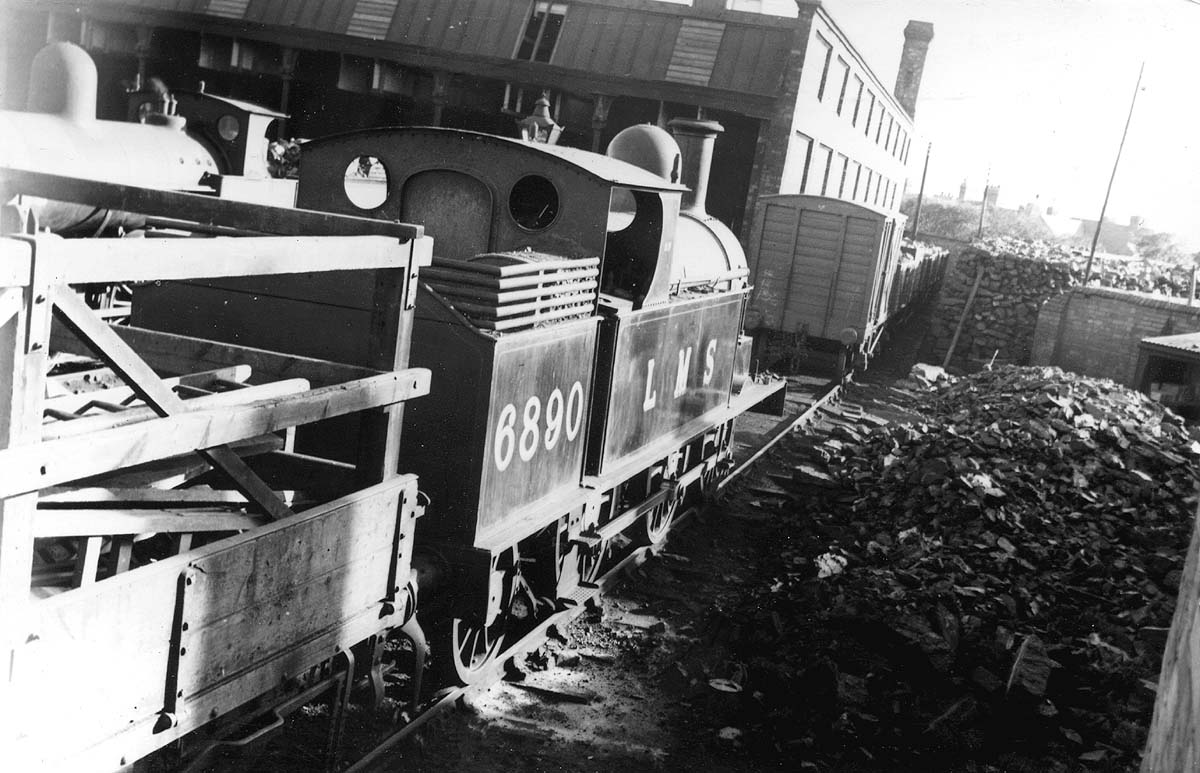 |
|
London North Western
Railway:

Midland
Railway:

Stratford
Midland Junction Railway
|

|
LMS Route: Rugby to Leamington Spa (Avenue)
LMS Route: Nuneaton to Leamington
LMS Route: Leamington to Weedon
Warwick (Milverton) Shed: lnwrwar_shed1435
 |
Ex-LNWR 2P 0-6-2T 'Watford Tank' No 6890 stands in front of
the engineering department's wagon adjacent to Milverton's coal stacks. Built
at Crewe works in October 1889, No 6890 remained in service until November 1945
when it was withdrawn from Edge Hill shed in Liverpool to be scrapped shortly
afterwards by Crewe works. Engineering work was primarily carried out on
Sundays, the quietest day on railways, and whilst mainly associated with heavy
engineering work such as bridge replacement and track renewal it could also
involve workers scaling ladders to cut down trees, inspect structures and paint
structures above running lines. As with many LNWR sheds, coal was stacked for
use by its locomotives and could remain in the stacks for several months as it
was frequently purchased during the summer months when coal was at its
cheapest. The storage and stacking of coal was subject to rules by the
operating departments of all railways reflecting the impact of poor quality
coal could have on the running of the railways.
These rules laid down the process of how to stack the coal
and also the importance of physically recording on site the quality of the coal
and the date of stacking in order to rotate the coal stored. Coal would
deteriorate after a period, particularly the coal at the bottom of the stack,
and it was important that the coal was used before what to day we describe as
Best Before date. The coal in the distance would have been stacked, then
later transferred into an open wagon, then moved to the 'coal hole' to be
followed by loading the coal into the tender or bunker of Milverton shed's
locomotives and all manually demonstrating just how labour intensive the
railways were. It was not until the late 1930s and in particular, the
post-Second World War period, when labour costs grew to a point which required
mechanical solutions to be introduced. The LMS was a pioneer in this respect,
with large sheds being given coaling towers and ash plants from the
mid-thirties and later, with Ivatt, self-cleaning smokeboxes and rocking
firebox grates.
 back back

|
